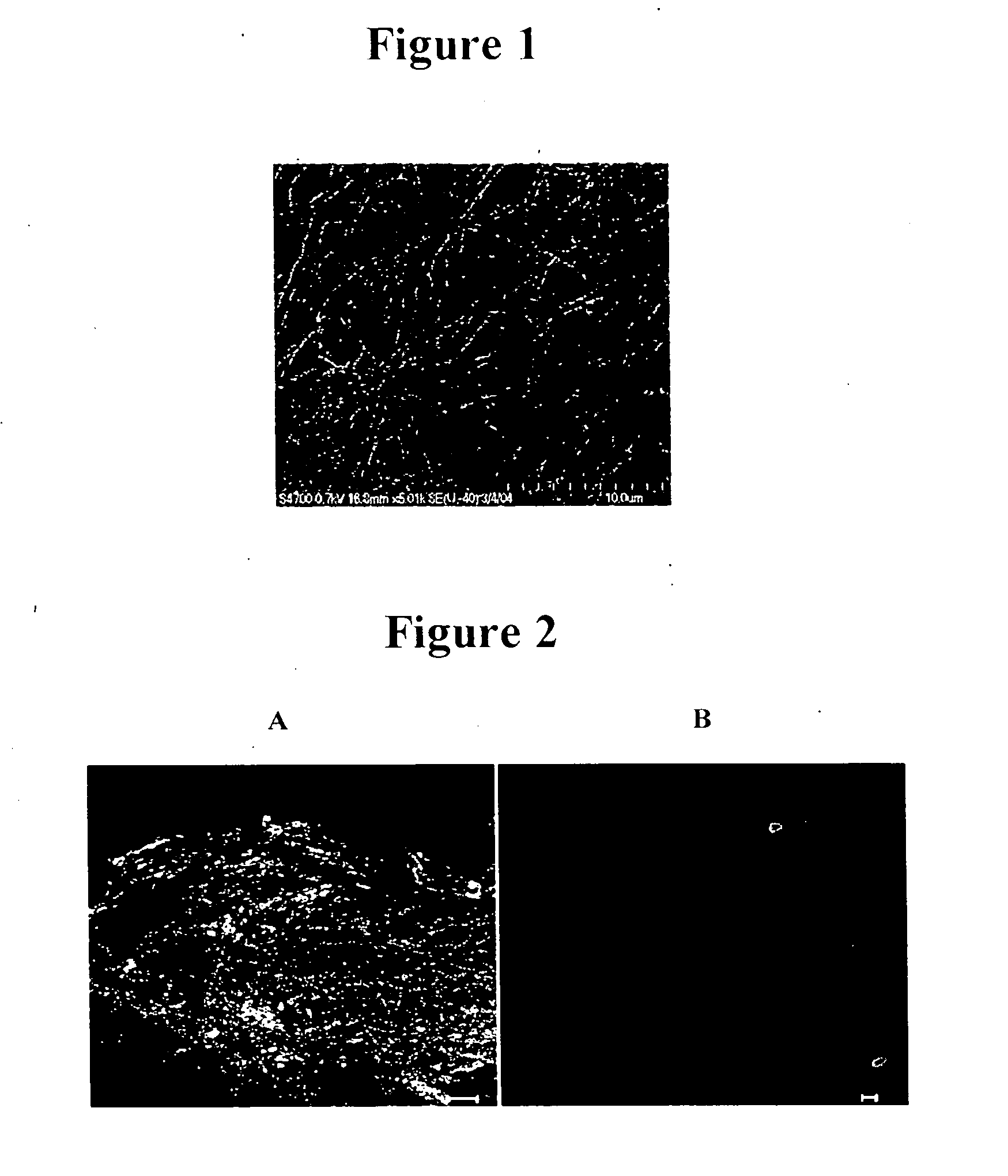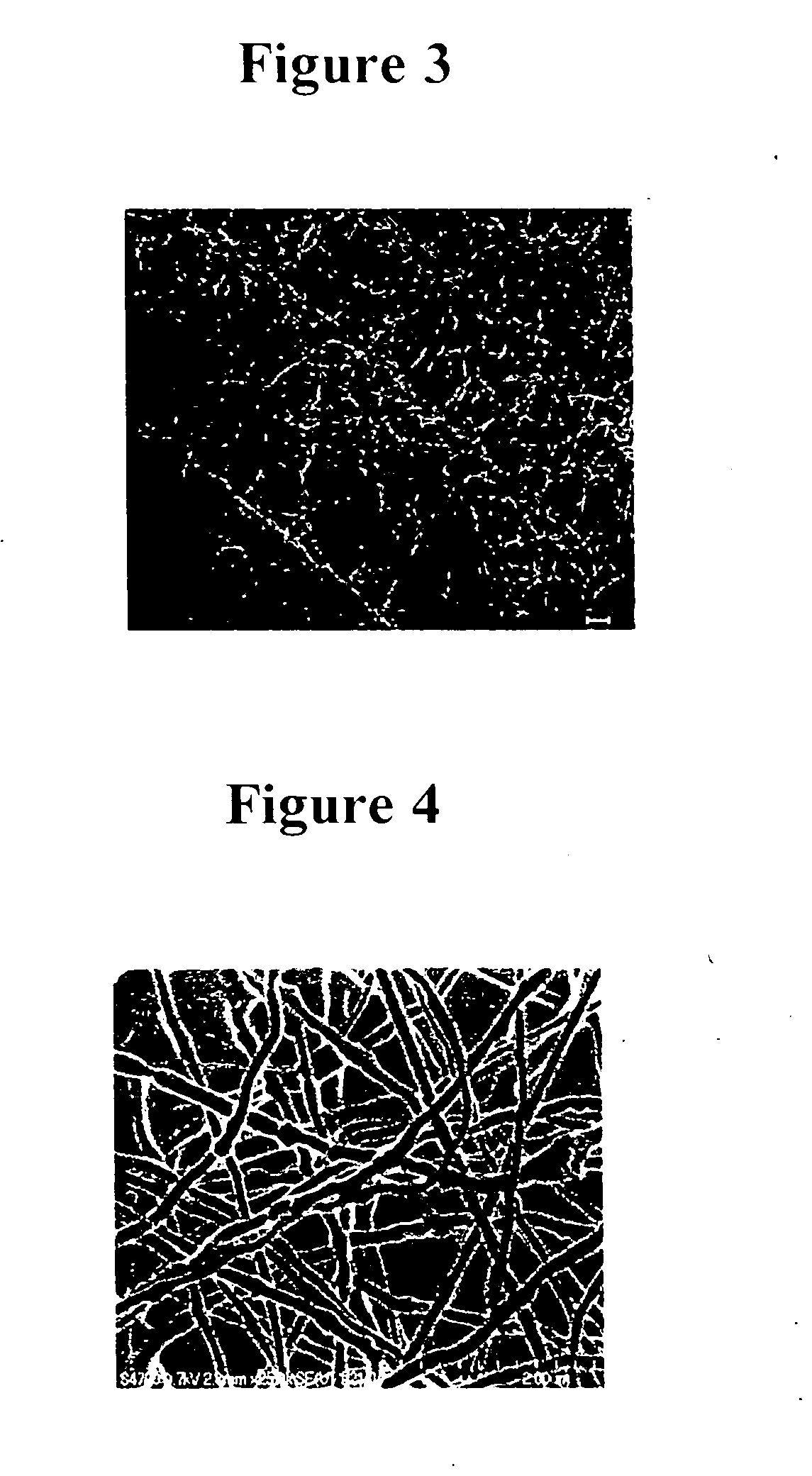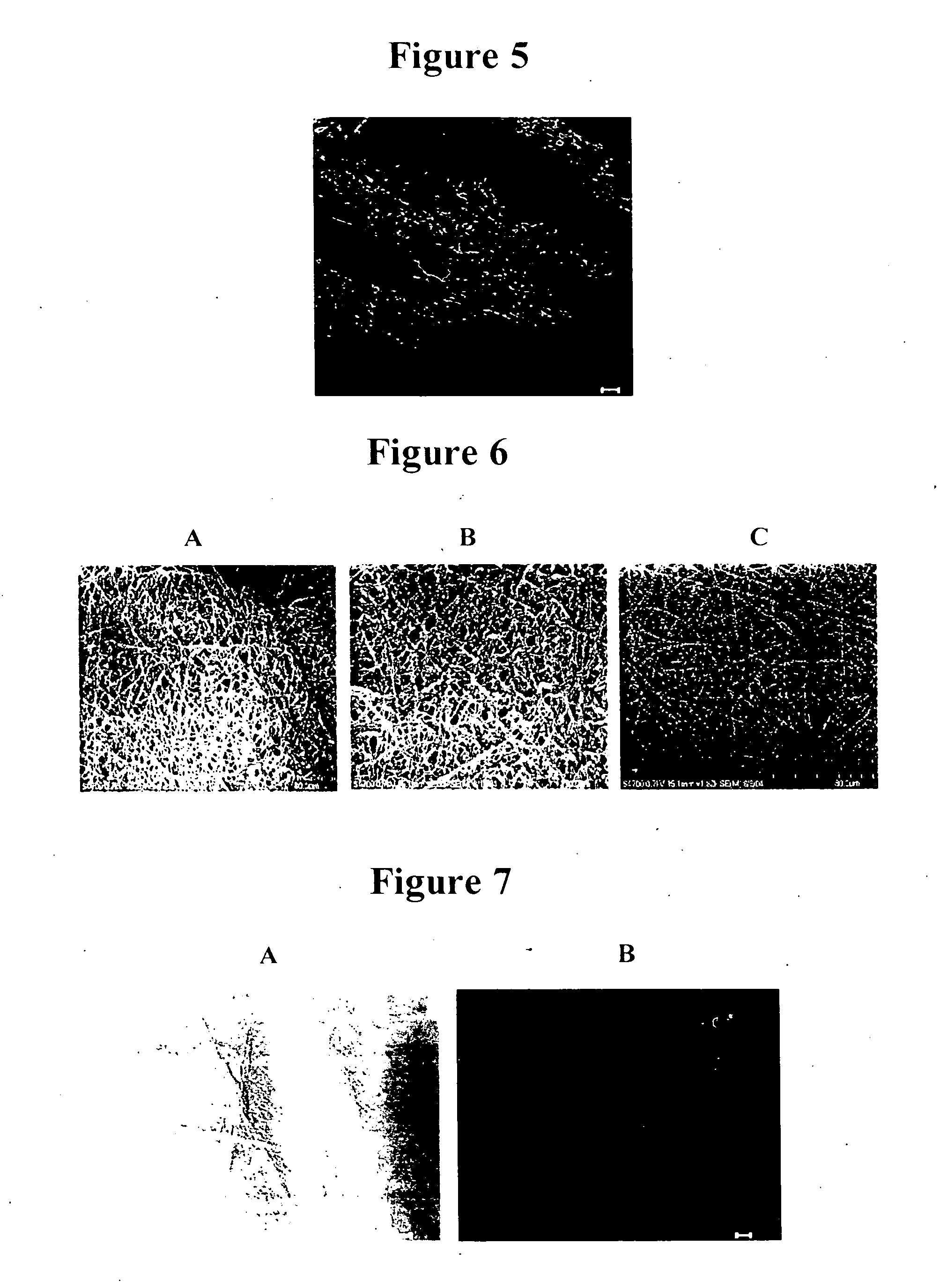Multifunctional and biologically active matrices from multicomponent polymeric solutions
a polymer and biological active technology, applied in the field of multifunctional and biologically active matrices from multicomponent polymeric solutions, can solve the problems of unable to deliver an adequate dose, the device cannot be so small that it is not able to meet the requirements of application, and the application of the problem may suffer
- Summary
- Abstract
- Description
- Claims
- Application Information
AI Technical Summary
Benefits of technology
Problems solved by technology
Method used
Image
Examples
example 1
Electrospinning Functionalized Fibers
Materials and Methods
[0086] Hydroxy terminated and thiol terminated four-arm star poly(ethylene glycol)s (Mn=10,300; Mw=11,300 g / mol and Mn=10,000; Mw=10,800 g / mol, respectively) were purchased from Polymer Source (Dorval, QC, Canada). LMWH sodium salt (porcine intestinal mucosa, avg. molecular weight 3000 g / mol) was obtained from Sigma (St. Louis, Mo.). Alexa Fluor® 350 carboxylic acid, succinimidyl ester was obtained from Molecular Probes (Eugene, Oreg.). Solvents and reagents were distilled or purified according to standard procedures.
Synthesis of PEG-LMWH Conjugate
N-Deacetylation of LMWH.
[0087] LMWH (Mr=3000 g / mol) was used in these investigations. In some cases, the LMWH was first separated into a high affinity fraction via anionic exchange chromatography on diethyl aminoethyl (DEAE) resin. Such fractionation is not an absolute requirement, but provides a LMWH fraction with higher heparin binding affinity. LMWH was eluted from the c...
example 2
Growth Factor Release Assays of Elecrospun Fibers
[0105] An ELISA format was employed to characterize the binding of bFGF in a series of samples: a blank well, PLGA fibers alone, LMWH / PLGA fibers, and PEG-LMWH / PLGA fibers. Growth factor release studies were performed using a Quantikine Human FGF Basic Kit (R&D Systems, Minneapolis, Minn.). Incubation of the growth factor was completed using a 24-well polystyrene plate (Corning Inc., Corning, N.Y.) and transwell membranes (Fisher Scientific, Atlanta, Ga., 8 μm pore size) were used to secure the fibers during the release study. The plate, membranes, and fibers were blocked with 3% BSA (Sigma Aldrich, St. Louis, Mo.) in PBS (Invitrogen, Carlsbad, Calif.) overnight. All samples were washed three times with PBS at room temperature and then incubated with 4 μL bFGF (R&D Systems, Minneapolis, Minn., 2.5 μg / mL in PBS) for 2 h at 4° C. The fibers were then transferred to the transwell membrane and 1 mL of PBS was added and incubated at 4° C...
example 3
[0109] The PEG-LMWH / PLGA, LMWH / PLGA, and PLGA fiber matrices were tested to determine if there were any differences in the ability of the membranes to affect cellular proliferation of MG63 (human osteosarcoma) cells. PLGA, LMWH / PLGA, and PEG-LMWH / PLGA electrospun membranes were sterilized under UV light for 4 h and incubated in 1.5 mL Dulbecco's Modified Eagle Medium (DMEM) containing 5% (v / v) fetal calf serum (FCS), bFGF (10 ng / mL), penicillin (100 U / mL) and streptomycin sulfate (100 μg / mL) for 2 h. The membranes were then washed 2-3 times with sterile PBS. All membranes were incubated in bFGF (15 ng / membrane) prior to the cell proliferation assay. The membranes were then placed in 24-well tissue culture dishes containing an MG63 cell (2×105 cells / mL, American Type Culture Collection, Manassas, Va.) suspension in DMEM supplemented with 5% (v / v) FCS. The plates were shaken every 30 min for 4 h. The scaffolds were then transferred to a new 24-well plate and ...
PUM
| Property | Measurement | Unit |
|---|---|---|
| size | aaaaa | aaaaa |
| molecular weights | aaaaa | aaaaa |
| diameter | aaaaa | aaaaa |
Abstract
Description
Claims
Application Information
 Login to View More
Login to View More - R&D
- Intellectual Property
- Life Sciences
- Materials
- Tech Scout
- Unparalleled Data Quality
- Higher Quality Content
- 60% Fewer Hallucinations
Browse by: Latest US Patents, China's latest patents, Technical Efficacy Thesaurus, Application Domain, Technology Topic, Popular Technical Reports.
© 2025 PatSnap. All rights reserved.Legal|Privacy policy|Modern Slavery Act Transparency Statement|Sitemap|About US| Contact US: help@patsnap.com



